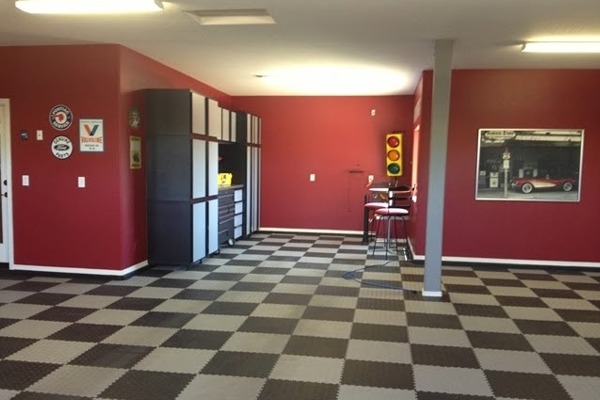In planning you new garage project the subject of color can become an important element.
Dark Versus Light: darker colors will make a garage seem smaller if placed next to a lighter colored house and, of course the opposite is true. In a back yard setting a light colored garage will visually dominate the back yard space and a darker garage will visually recede. So, if you prefer to diminish ts presence, build it further back and with dark colors. If there are shade trees then placing the garage in shade helps in this intent. To exaggerate its presence use the lighter colors
Range of Colors: If you can visualize or capture the range of colors present in your building site, like houses, fences, paving landscaping and trees you can go to your local paint store (or home improvement store) and find samples to represent the surrounding elements. That becomes your frame of reference and you can tape them together in a sort of background. Next select paint colors that you feel good about for the garage body color including light, medium and dark colors. With you collection of color samples for the garage you can lay them onto the background to get a trues sense of how it relates and if you like it. If you can do this in the building site area you will see accurate colors. Even if you have narrowed down the garage color preference to, for example, blue you can find many shades available and you can narrow down.
Another way is to simply gather up color samples you like, go to building site and hold each sample about a foot away from your face and you can see how it color relates to the surroundings.
Warm or Cool Colors: You may find color samples in the warm or cool categories. Warm colors have reds, browns, yellows in their mix and cool colors have blue and greens. If you look at the range of grays you can see how some feel more earthy, balmy, soft and others are more icy and hard.
